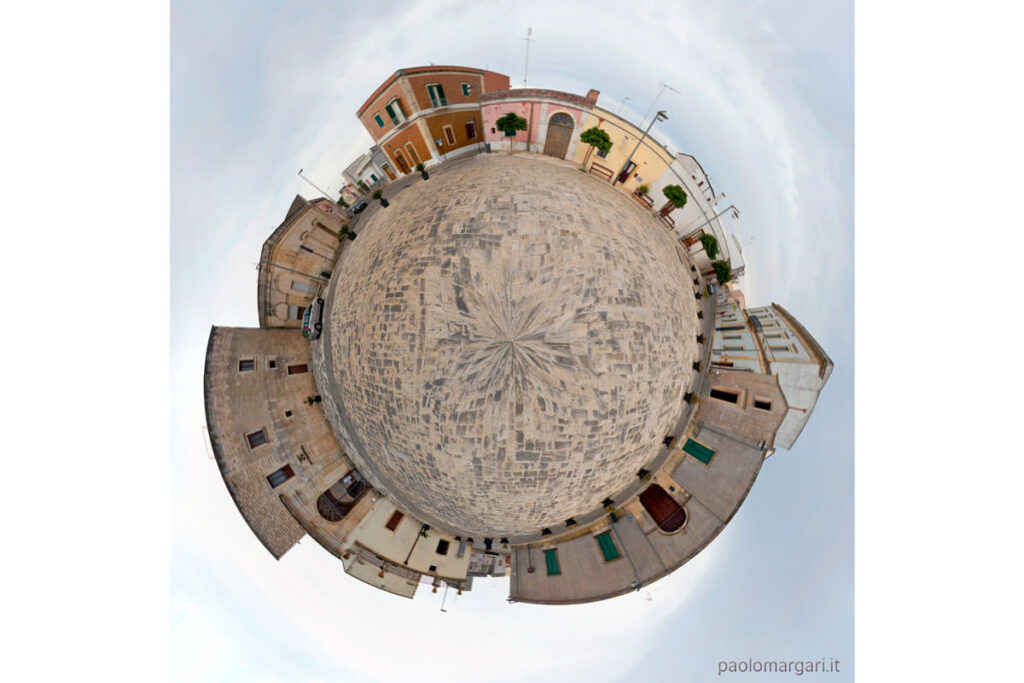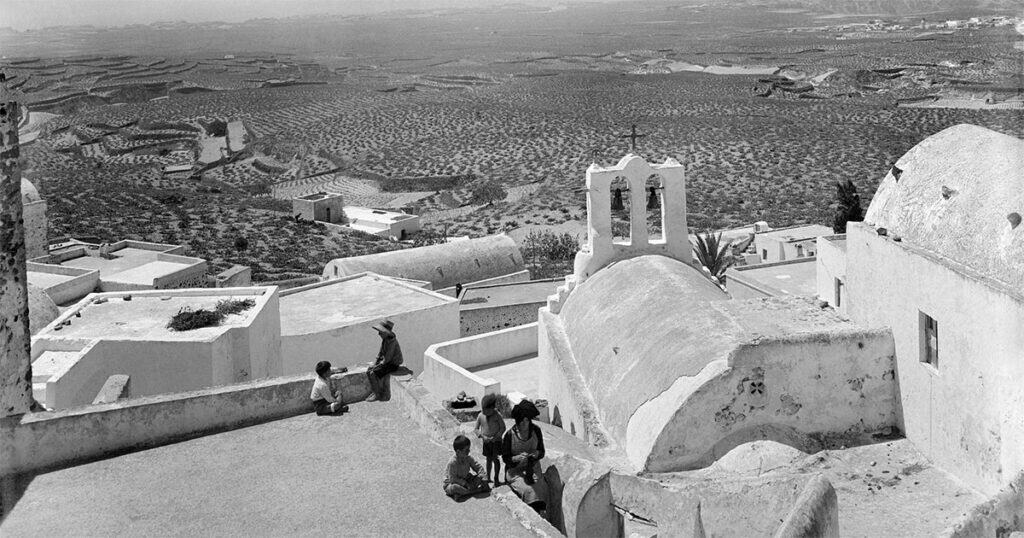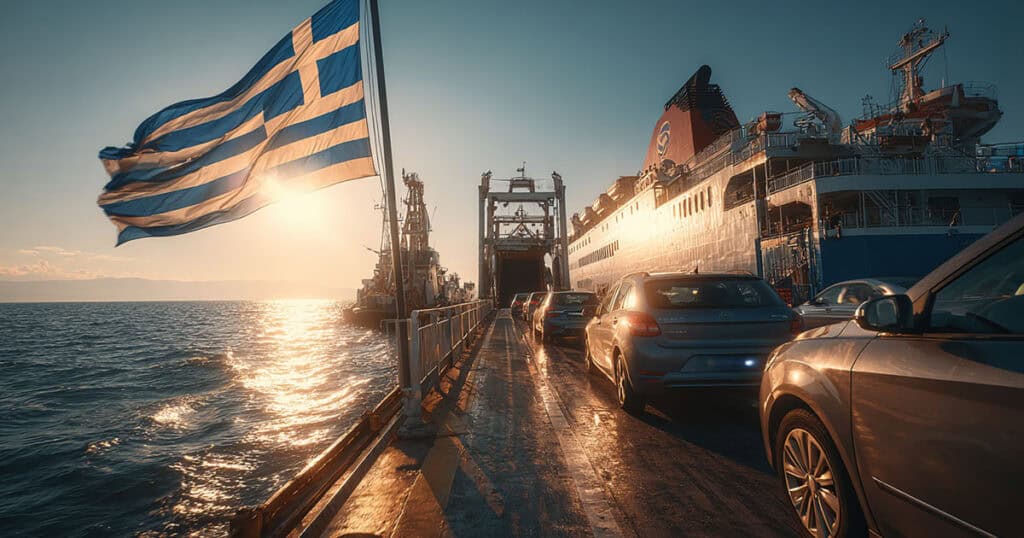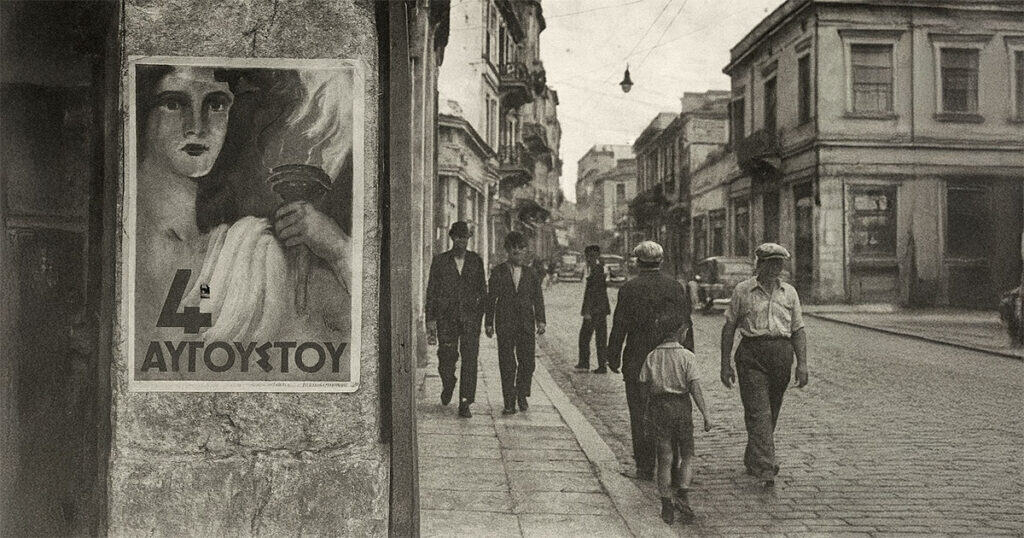Venice clearly displays its influences from, and on Byzantium, and, as we discussed a couple of months ago, Venice’s processing of generations of Byzantine immigrants set the pattern for the post-Byzantine Diaspora.
This pattern repeated itself elsewhere in Orthodox communities in Europe and later in the Americas and Australia. Southern Italy differs considerably. Here, the Byzantine communities were autochthonous, local Greek-speaking people loyal to the Emperor in Constantinople and to the Orthodox Patriarch there. Greeks settled in Southern Italy in ancient times, and their communities remained intact and loyal to the Byzantine Emperor until the Arabs evicted Imperial rule from Sicily and the Normans from Southern Italy. The last enclave, Bari, fell to the Normans in 1071, and except for a brief occupation of Ancona one hundred years later, Byzantine rule never returned, and Southern Italy became, to use the Greek term, a hameni patrida, lost homeland.
Ten years ago to the month, in August 2000, I arrived in Naples, the Ancient Greek city of Neapolis (New City), directly from Chicago, where I then lived and worked. Just turned thirty and still single, I had become obsessed with the Byzantine remnants in Southern Italy. I get that way sometimes, when a topic or a place absorbs me. My ultimate destination was the Heel of Italy, the Salentine Peninsula, where nine villages are collectively known as La Grecia Salentina (Salentine Greece) or in the local dialect, Griko, “ta ennia choria.” Here aspects of the Greek language and culture have survived the centuries. The other Hellenophone area of Italy, La Grecia Bovesia, centered on the Calabrian hill town of Bova, also speaks a version of Griko. I spent an evening in Naples, where the palette declared itself satisfied with the local pizza, and wine taken straight from the barrel, without the dubious benefit of sulfites. Then, the obligatory evening stroll to a café where the doppio espresso predictably did not disappoint. The swarthy Neapolitans, tyrannized by car and scooter, and devotees of the café culture, readily resemble Greeks, yet their baroque city recalls little, if anything, of the Balkans. Ancient Greeks may have founded Neapolis, and Byzantium may have held periodic sway, but Naples, in contrast to Venice, conjures no images of Byzantium.

The next day, I boarded the train, crossing the boot of Italy and the central Apennine Range, bound for the Adriatic port of Bari, an obvious destination for two reasons. First, Byzantium’s political presence in Italy expired here, in 1071, the last outpost to fall to the Normans. Then, there is Saint Nicholas, whose corpse was taken from Asia Minor by Bariot sailors, and now lies in a crypt at San Nicola di Bari Basilica, a lovely Roman Catholic Church in Bari’s old center. As the patron saint of sailors, Saint Nicholas and the male and female versions of the name Nicholas are ubiquitous in Greece, and to a lesser extent in other Orthodox countries. In a gratifying show of inter-Christian solidarity, the Crypt itself houses an Orthodox chapel, where, when I visited, two Russian monks were deep in prayer, their Slavonic cadences transporting Bari back to the Byzantine bosom, if only in supplication and incense.
Though the Crypt and the earthly remains of Saint Nicholas moved me greatly, generally Bari left me a bit non-pulsed. It seemed a typical Mediterranean port, somewhat seedy, with few monuments recalling the particular Byzantine past I sought to find. I needed to head south, into Salento, to find a living link to the Byzantine past.
Italians love their cars, and their road builders obviously retain enough of the Roman engineering skill to produce some of the world’s finest highways, the autostrade. This is a complete contrast to Greece, where until recently most roads were oriental tracks. The route from Bari to Lecce, Salento’s baroque “capital,” was a brisk one, and merited a stop in the shade of architecture to rival Florence, for one of my beloved espressos. Notwithstanding the moniker “Florence of the South,” all of the locals and tourists seemed to be Italians, and they enjoyed their architecture with a relaxed intimacy that, as an American bereft of such monuments at home, I could only envy.
The autostrade runs through the middle of the Italian “Heel,” and only a few signs alert the driver that he is passing through Grecia Salentina, a small oasis of Greek language and culture in the middle of the Salentine Peninsula. Pulling off to one of them, the village of Calimera, I am greeted by the town name and “Kalos Irtet” the local welcome in the Griko dialect. The nine towns of Grecia Salentina, all of which I visited, were part of a larger Greek language area that receded with time, and for the most part the towns, lovely, whitewashed affairs in the midst of olive groves clustered around a baroque church bell tower, all looked the same. The colors were the same as in Greek islands, and even the church towers recalled places in Greece which had experienced Venetian rule, such as Naxos or Corfu.
Though there were a few carefully preserved Orthodox chapels dotting the countryside, the functioning churches were all Roman Catholic, and have been for centuries. Orthodoxy faded, by necessity into the Uniate Doctrine, or Rito Greco, as it is known locally. This rite, using Greek in the liturgy and elements of Orthodox liturgy ended by 1600, to be replaced by standard Roman Catholic liturgy and doctrine. That said, some people have converted to Orthodoxy out of a sense of cultural loyalty, and in Grecia Bovesia, a small proportion of Greek-speakers remain Uniates. Southern Italy also has a large Albanian-speaking population, similar in culture to Greece’s Arvanites, and often they remain staunchly Uniate or Orthodox, and culturally Byzantine. Many in fact came to Italy in the Ottoman era from parts of Greece, and the foustanella is often worn at their celebrations.
In the town of Corigliano d’Otranto, I fell in with a local cultural circle, the Argalio (Greek for “loom”), and they spun tales, in a combination of the Griko dialect, my Spanish-leaning Italian, and broken English, over fantastic seaside meals and midnight music, where all voices joined in their songs of love and heartbreak, in a dialect readily understandable to a modern Greek. They also introduced me to their Pizzicata dance, a spinning dance where man circles woman circles man, and they laughed at how I danced it “like a Balkan, but I guess that’s what you are, after all.” Their music lacked the spice of the East, of Turkey, that so peppers music from the Slovenian border to Syria. They too lacked that bitter taste, that peppery anger, which all of the people on the Eastern side of the Adriatic seem to possess. The heavy weight of the Turkish presence was palpably absent.
For a bit more of the Balkans in Italy, I went to the town of Otranto, where the Adriatic reaches its narrowest point. Here fortress walls, a properly frescoed Byzantine Church greet the visitor, the only place on the Italian mainland to fall to the Turks, in 1481. Albanians were all over the town, ferry services advertised routes to Corfu, Valona, and Durres. My car radio picked up music from across the Adriatic, Albanian folk pop sounding every bit like Greek, Serbian, or Turkish music, just change the language. I could not help think that the Balkans without the Turkish legacy is not the Balkans. After all, the word “Balkan” itself is Turkish for “mountain range.” It says it all.
Back in Corigliano d’Otranto, we had another evening of cafés and mini festivals. More parties were due later in the week, in neighboring towns, but I had to move on. The place captivated me too much, it was like Greece with all of the delights but without the weight. I sensed that if I did not leave, I might just stay. The next day, I boarded a ferry from Brindisi to Patras, the Peloponnesian port where my grandfather first set out for America. My friends waved from the pier.
The Salentine “Greeks” are a lively bunch, with a lust for life. They are Catholic Italians who share blood with Greeks and aspects of their culture and language, but neither their religion nor their identity. They are a lost Greek homeland, but they do not feel lost, and they are at home. So was I, when I was there.








